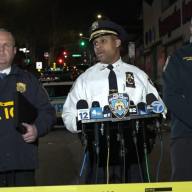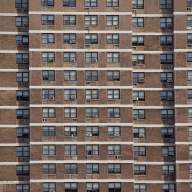The NYC Department of Transportation is now studying St. Paul Avenue, hopefully putting to rest the controversy over the direction of one block that has had neighbor arguing with neighbor for the past four years.
Bowing to a nearly unanimous vote by Community Board 10 requesting the reversal in the direction of traffic for St. Paul Avenue, Bronx DOT’s commissioner Constance Moran said at a press conference on Thursday, April 1 that the agency is now conducting a traffic study of St. Paul Avenue. If DOT takes the board’s recommendations, the study will include a review of traffic calming devices for St. Paul Avenue as well.
The study, requested by CB 10 by a 21 to 2 vote on Thursday, March 18, should look into the affect of reversing the direction of St. Paul Avenue between Pelham Parkway South and E. 196th Street on the now relatively quiet block. Moran said that the study should take about two months.
“It has been and will be studied for the next six to eight weeks,” Moran said at a press conference about the repaving of St. Theresa Avenue. “No determination has been made on St. Paul Avenue.”
The recent action of CB 10 reverses a unanimous vote taken at its November 2005 meeting, when the full board decided to reverse the direction of the block from its southbound direction, Westchester Avenue bound to a northbound direction by a vote of 28 to 0.
In 2005, concerned residents petitioned the board for the reversal because of pedestrian safety issues. Cars exiting Pelham Parkway would turn down St. Paul Avenue to reach Westchester Avenue and other areas south of the parkway. The CB 10 vote drew a strong reaction from proponents of pedestrian safety on St. Paul Avenue and surrounding blocks.
“A reversal back to a southbound direction probably would make us the only community in the city to reopen a shortcut that entices speeding parkway traffic onto a residential street,” said Virgina Valenti, a St. Paul Avenue resident. “You can’t clear congestion or reduce accidents by bringing in thousands of vehicles off the parkways. It’s not rational. Accidents were high on St. Paul, E. 196th Street and Burr Avenue before the reversal. Afterwards, [from 2006 to 2008] accidents dropped in these locations. If we have dangerous driving in our neighborhood now, will we have fewer accidents, or a lot more, by bringing in more vehicles?”
Ironically, the reversal in the direction of St. Paul Avenue was a galvanizing force behind the revitalization of the Pelham Bay Taxpayers and Community Association, whose members by and large supported the re-reversal of the street back to its original direction.














